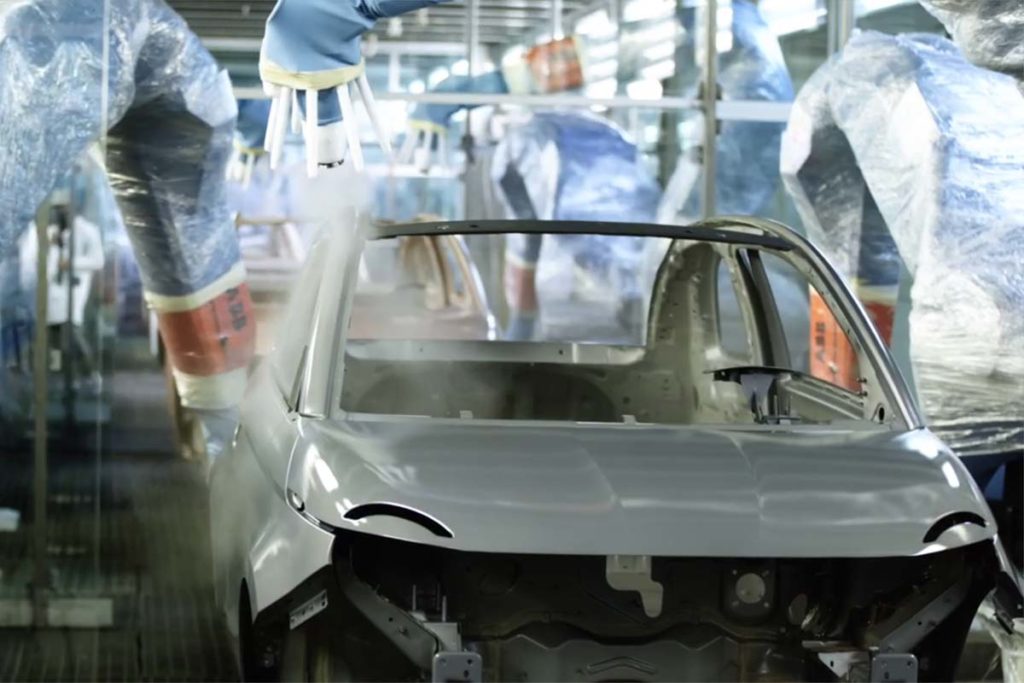
Against a backdrop of crisis for the Italian automotive industry, Stellantis confirmed its commitment not to close any factories or make any mass lay-offs in Italy. At a round table organized by the Italian government, Giuseppe Manca, Head of Human Resources at Stellantis Italia, reassured those involved in the sector. However, this announcement comes in a tense climate marked by frequent production stoppages, falling demand and challenges linked to the energy transition.
A clear commitment despite the challenges
Last Thursday in Rome, Stellantis took part in a meeting with the Minister of Industry, Adolfo Urso, union representatives and other industry players. Giuseppe Manca stated:
"Stellantis has no intention of closing any plants in Italy, nor of making any mass layoffs."
This statement is intended to allay fears linked to the economic and industrial difficulties facing the group. Stellantis, born of the merger between PSA and FCA, is facing a series of challenges, including the decline in automobile production in Italy. According to the FIM-CISL union, this could fall below 500,000 units by 2024the lowest level since 1958. The Italian government's objective is to produce 1 million units a year (with Stellantis and other manufacturers).
Slower production and tensions with unions
Despite its promises, Stellantis has been forced to rationalize its operations. Fiat's iconic Mirafiori plant in Turin is regularly shut down. It currently produces the electric Fiat 500 and Maserati models, but low demand for expensive electric vehicles is weighing heavily on its business.
The unions, notably Fiom-CGIL, FIM-CISL and UILM, have expressed their dissatisfaction. They consider Stellantis' guarantees insufficient, and are calling for direct intervention by the Council Presidency. Gianluca Ficco, national secretary of UILM, declared:
"The automotive table opened over a year ago at the Ministry has proved ineffective. We request a meeting with Stellantis at the Palazzo Chigi."
The challenges of electrification and Chinese competition
Stellantis faces major structural challenges. The transition to electrification, dictated by European regulations, according to Stellantis, increases electric vehicle production costs by 40 %. Added to this is competition from China, which enjoys a 30 % cost advantage and is flooding the world market with excess production capacity.
Daniela Poggio, Head of Communications at Stellantis Italia, stressed:
"Changing the current Green Deal rules would be unwise. The automotive industry operates on very long lead times, and instability in the rules would have negative effects."
Further efforts by the Italian government to support the sector

Minister Adolfo Urso has announced a plan to support the Italian automotive industry, including a €640 million fund for 2025. He also unveiled a trilateral initiative between Italy, France and Germany to discuss common strategies.
In addition, a "non-paper" on the automotive sector will be presented to the Competitiveness Council on November 28. This report, co-authored with the Czech Republic, aims to adapt European policies to the economic realities of the sector.
Unlike German carmakers, Stellantis sells almost nothing in China, so it hasn't yet felt the effects of competition on its luxury brands. It's also to be hoped that the brand will pass through the drops of the future import tax wanted by Trump - if the USA becomes inaccessible, that's the end of it... Fiat needs to react very quickly on the 500e's batteries and engines, as we've been told 18 to 24 months is far too long.
Stellantis is all about the purchasing volume increase from suppliers, and components costs decrease, by platform sharing, with linked R&D spending decrease. But with this move you always get an exterme model similarity, so Fiat sales will be eaten by Jeeps and Peugeots, and Alfa sales by the same brands.
I'm not at all sure. For example, the Topolino has better customer feedback than the Ami, just as the Fiat Grande Panda has a more polished and appreciated design than the Citroën C3 - and it benefits from a later release, which avoids the avalanche of failures and bugs of the Citroën. The Alfa Romeo Junior, however unsuccessful its design may be, benefits from more engaging roadholding and a more powerful electric motor. Only the Lancia Ypsilon doesn't seem to me to offer any real added value, because its proposition doesn't seem to me to be in line with its marketing and price positioning.